An Integrated Energy, Indoor Air Quality and Moisture Model
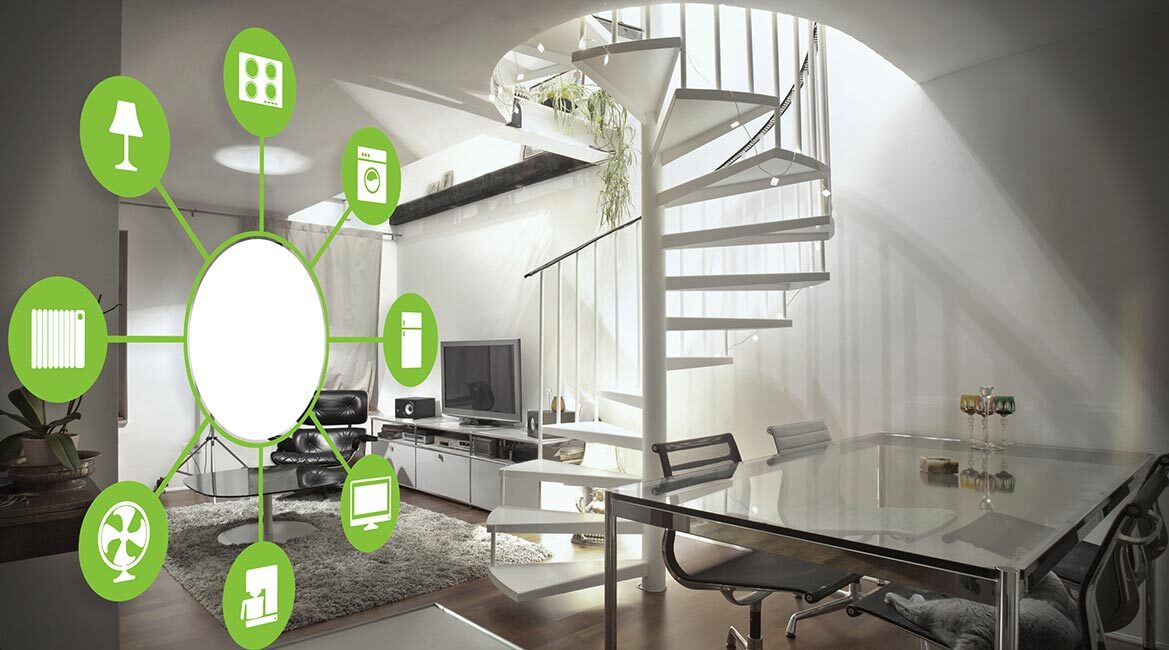
Purchased from Istock.com. Copyright.
Energy, indoor air quality, and humidity are three key indicators in assessing overall building performance. In this research study, EnergyPlus, CONTAM, and WUFI are single models used to measure each of these indicators. Each model calculates the performance of a building in its own respective field. Coupling different operating parameters in a single model leads to inaccuracy in the predicted overall building performance. Consequently, an integrated model was developed in which all three energy, indoor air quality, and moisture measurements were assessed simultaneously. Then, the integrated model’s predictions of overall building performance were compared with those obtained with each single model. Results showed that the integrated model produced an accurate assessment for the overall building performance as opposed to using single models separately.
Single Models Evaluating Different Performance Parameters
For decades, many research studies that included numerical modeling, experimental testing, and field measurements have been conducted to evaluate the performance of residential and commercial buildings. In most of these studies energy, indoor air quality (IAQ), and moisture performance were assessed independently with single models [1-5]. Some researchers worked on the energy efficiency of buildings using the EnergyPlus single model [6]. Others used the CONTAM single model to investigate indoor air quality [7]. And in other research studies, the WUFI single model was used [8] to assess the moisture performance of the building envelope.
Methodology in Integrating the Three Single Models
In this research study, an integrated model was developed to predict the performance of a building for energy, indoor air quality, and moisture simultaneously. The first step was to evaluate a combination of energy model with indoor air quality. In the second stage, indoor air quality and moisture models were combined, and in the last stage, a combination of energy, indoor air quality, and moisture models was developed in terms of thermal comfort. In the first stage, coupling EnergyPlus and CONTAM models through a co-Simulation method was used as indicated in Figure 1—a method based on a research study by Dols et al. [9]. This method was innovative due to the exchange of airflow and temperature control variables between both EnergyPlus and CONTAM models—correcting these variables was done as per Figure 2. Finally, this type of coupling could increase the accuracy of the integrated model in assessing building performance. In the second phase of this research, combining the CONTAM and WUFI models was evaluated. Finally, development of the integrated model was based on the combination of EnergyPlus, CONTAM and WUFI models.

Figure 1. Comprehensive diagram of an integrated model development.
Numerical simulations were performed for the three different climate regions of Montreal, Vancouver, and Miami. To perform these simulations, a three-story house was used as a case study. In this paper, only the first stage of this research was evaluated with a combination of two models, EnergyPlus and CONTAM [10]. Results of the other two steps will be published at a later date.
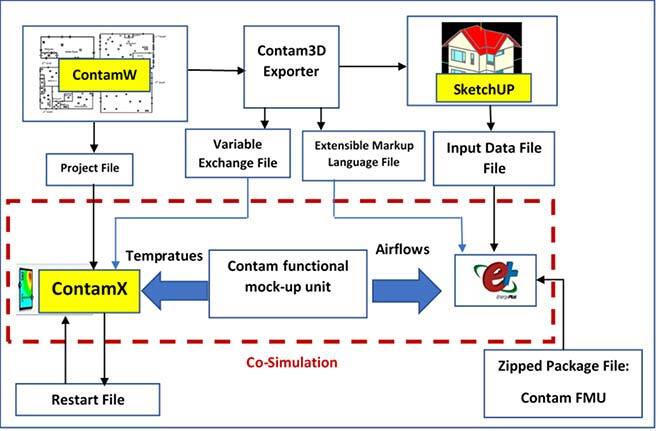
Figure 2. Co-simulation mechanism with EnergyPlus and CONTAM [11].
Optimum Conditions Calculated with the Integrated Model
In this article, results obtained with the separate use of EnergyPlus and CONTAM single models were compared with those obtained with the integrated model (coupling of both models). For the three-story house case study, we ran three scenarios, as shown in Figure 3. In scenario 1, Airtight, the envelope was improved by 45%, and in scenario 2, Exhaust Fan, the ventilation rate was improved by 50 l/s. When the energy status and indoor air quality of scenarios 1 and 2 were calculated with EnergyPlus and CONTAM single models respectively, the average annual amount of total energy consumption compared to the current situation for the cities of Montreal, Vancouver and Miami showed a decrease of 29.25%, 26.3% and 31.8% for scenario 1, and an increase of 14.25%, 11.15%, and 12.3% for scenario 2, respectively (Table 1). However, the average annual air change rate for the house in Montreal, Vancouver, and Miami showed a decrease of 70%, 66.6%, and 65% for scenario 1, and an increase of 33.2%, 29.4%, and 85.9% for scenario 2, respectively. Therefore, scenario 1 showed better energy consumption control but an unfavourable IAQ, and scenario 2 showed an unfavourable energy consumption but a better IAQ.
In scenario 3, optimal conditions for the case study were defined, where optimal energy consumption and IAQ were predicted with an integrated model. As a result, both energy status and IAQ were predicted in optimal conditions, as per results in Table 1. Optimal case study conditions in scenario 3 included a 42% improvement of the envelope, an improvement of the ventilation using a 26 l/s exhaust fan and a MERV12 filter. The average annual total energy in scenario 3 for the three cities of Montreal, Vancouver and Miami decreased by approximately 18.3%, 19.7%, and 18.85% and the air change rate improved by 26%, 26.5%, and 20.9%, respectively.
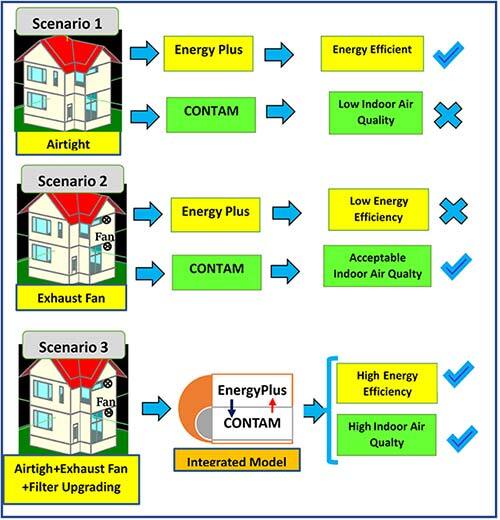
Figure 3. Status of defined scenarios for single models and integrated models.
Table 1. Comparison of the percentage in decrease or increase of energy performance, IAQ scenarios
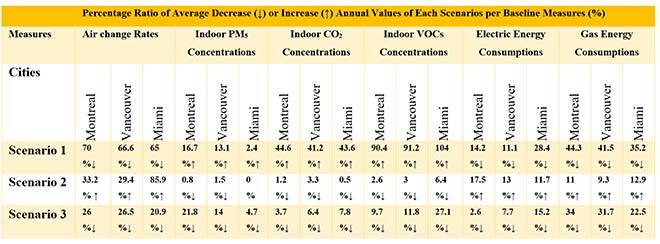
Conclusion
The energy performance and IAQ results of scenario 3 obtained with the integrated model were compared to those obtained with the EnergyPlus and CONTAM single models. Comparisons for the predicted average annual values of total energy consumption, and the air change rate calculated with single models and the integrated model are shown in Figures 4 and 5. Simulated results using the EnergyPlus single model were 20.54% and 11.48%, and with the CONTAM single model they were 10.96% and 39.93% for Montreal and Miami cities, respectively, more than those obtained with the integrated model. Therefore, a possible conclusion is that the accuracy of the integrated model is higher than the single models due to the exchange of control variables and their correction between sections of the energy models and IAQ.
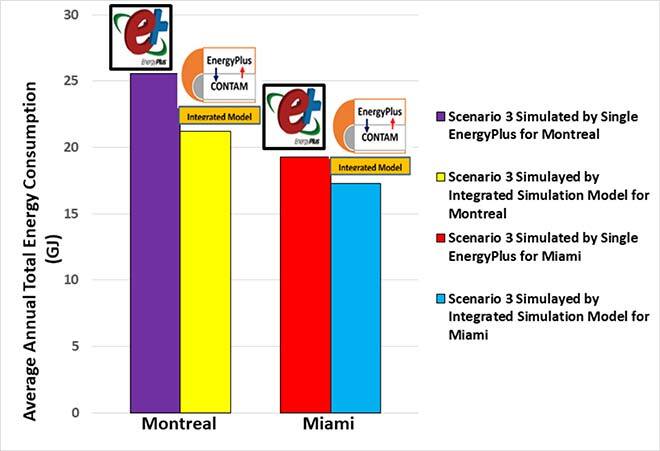
Figure 4. Comparison of scenario 3 simulation results between the EnergyPlus single model and the present integrated model.
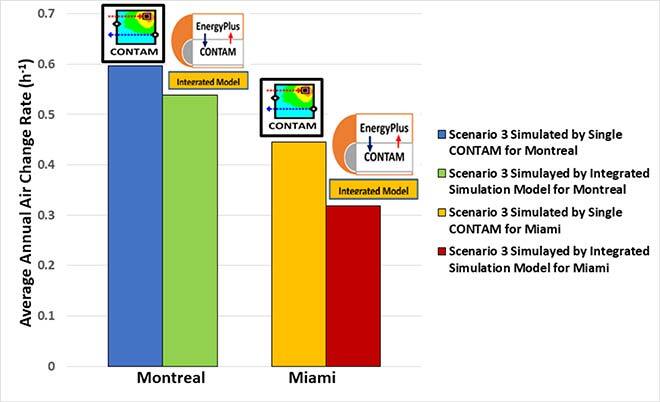
Figure 5. Comparison of scenario 3 simulation results between the single CONTAM model and the present integrated model.
Additional information
For more information, please refer to the following article published in the Energies journal.
Heibati, S., Maref, W., & Saber, H. H. (2019). Assessing the energy and indoor air quality performance for a three-story building using an integrated model, part one: the need for integration. Energies, 12(24), 4775.



